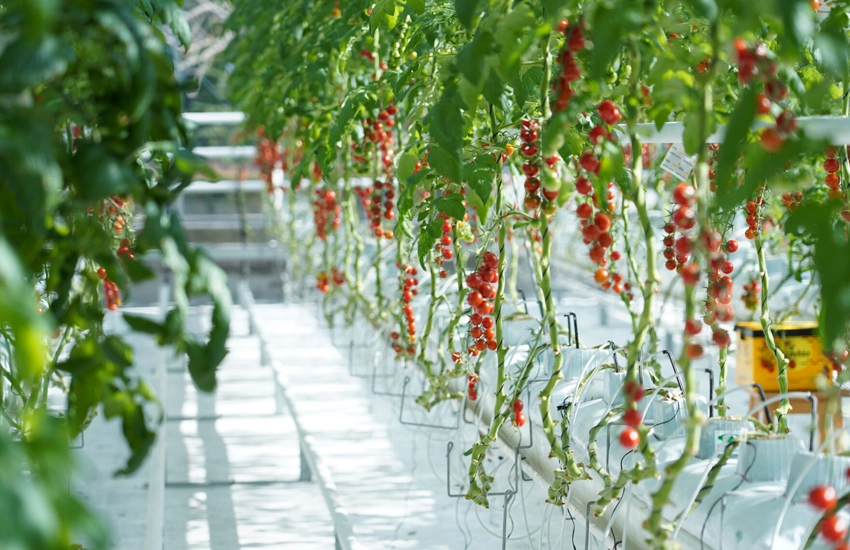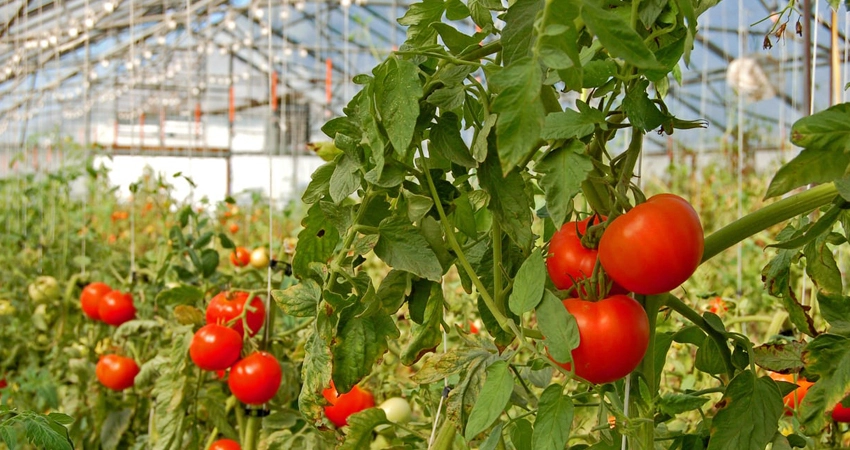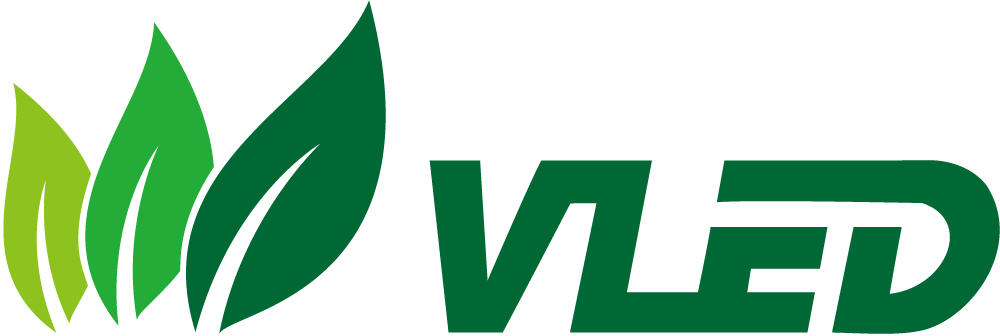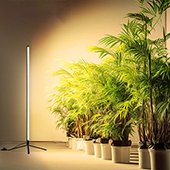Menu
Environmental Control Techniques for Tomato Cultivation in Winter Greenhouses
To improve the yield and quality of tomatoes, we have explored the environmental control techniques for the cultivation of high-quality tomatoes in solar greenhouses during the winter season. This includes aspects such as variety selection, planting arrangement, temperature management, humidity control, carbon dioxide supplementation, and lighting.
These techniques address issues of low environmental control technology levels and rough management practices, thereby enhancing tomato quality and increasing both yield and efficiency.
The cultivation of high-quality tomatoes in solar greenhouses during the winter season is currently a highly profitable cropping period in the Beijing region. This period coincides with major Chinese festivals such as New Year’s Day and the Spring Festival, where it typically benefits from harvest-picking activities and gift box delivery services, yielding considerable returns.
However, in the process of producing winter-season tomatoes in solar greenhouses in Beijing, issues frequently arise due to low technical levels of environmental control and management practices.
These problems lead to fruit cracking, poor flavor, and a low commercial yield rate, which not only affect the overall yield but also significantly impact the profitability, with a more pronounced effect on the production of premium quality tomatoes.
This blog focuses on the environmental control of overwintering stubble facility cultivation, from the selection of high-quality tomato cultivars and the cultivation environment of temperature, humidity, light, and carbon dioxide and other aspects of the environmental control of high-quality tomato cultivation of overwintering stubble in Beijing solar greenhouse cultivation technology.
Table of Contents
Variety Selection
High-quality tomatoes should be chosen for their good taste (large fruit-type tomatoes with a soluble solid content >6%, medium fruit type >8%, cherry tomatoes >9%), strong stress resistance, and high yield.
For large fruit-type tomatoes, varieties such as Rui Fen 882 and Provence can be selected.
For medium fruit-type tomatoes, varieties like Jing Cai No.8 and Jing Fan 308 can be chosen; and for cherry tomatoes, varieties such as Busan 88 and Summer Sunshine are suitable.
At present, the Beijing area mainly focuses on the cultivation of medium fruit-type tomatoes.
Cultivation Timing
The cultivation period for high-quality tomatoes during the winter season in the Beijing area generally starts with sowing in late August to early September, followed by transplanting in mid-October.
The initial harvest period begins in mid-January of the following year, and the end of the cultivation cycle, known as the pulling up period, is from late June to early July.

Temperature Management
Tomatoes are warm-loving vegetables, and temperature management is crucial for the growth of winter cultivation tomatoes. It should be adjusted according to changes in external temperatures and the varying growth stages of the tomatoes.
The optimal temperature range for their growth and development is 15–30°C, with the best temperatures being 23–28°C during the day and 15–18°C at night. When temperatures drop below 13°C, plant growth slows down and development can be poor; when temperatures exceed 33°C, physiological balance can be disrupted, and poor flowering can occur.
The most suitable soil temperature is 20–22°C. When the soil temperature falls below 13°C or rises above 32°C, the function of the roots decreases, root growth is inhibited, and the absorption of water and nutrients is hindered.
During the flowering period, tomatoes are particularly sensitive to temperature. The optimal temperature for growth during the day is 20–28°C, and at night it is 15–20°C. Temperatures that are too low (below 15°C) or too high (above 35°C) are not conducive to the normal development of the flowers, which can lead to a lack of flowering.
During the fruiting stage, the temperature should be controlled at 22–28°C during the day and 15–18°C at night. During the fruit expansion period, the required temperatures are 23–30°C during the day and 15–18°C at night.
Tomato seedlings generally require a cooling treatment during their early stage.
- After transplanting until the end of September is a period of natural temperature regulation.
- From early October to the beginning of March of the following year is the period for insulation and warming, followed by another period of natural temperature regulation from mid to late March until mid-April.
- From late April until the end of the cultivation cycle is the cooling period.
The most critical phase in the entire growth cycle is the insulation and warming period, with the main measures for insulation and warming being:
Digging insulation trenches. Ditch a trench 40cm wide and 40cm deep on the south and east-west sides of the greenhouse, and fill it with straw or leaves to reduce horizontal soil heat transfer.
Thickening the outer covering. Use straw mats for insulation, with the quality requirement reaching 4kg/m², and generally, each straw mat should not weigh less than 120kg; for those using insulating blankets, the thickness should reach 4.0cm, with a quality of no less than 1.2kg/m².
Thickening the walls. For greenhouse walls thinner than 60cm, take different measures to increase the wall thickness according to economic conditions and local resources.
For example, you can attach a 10cm thick polystyrene insulation board to the outer side of the north wall of the greenhouse, and then attach asbestos tiles or apply cement to ensure the insulation board is tightly bonded to the wall.
You can use the local resource of corn straw, tie the straw into bundles, and attach them to the outer side of the back wall (about 15cm thick), then use old greenhouse film to wrap and fix them tightly to the back wall; you can also pile soil more than 1.5m high outside the north wall of the greenhouse.
Use emergency warming products such as warming blocks to increase the temperature by 3–5°C.
Light Management
Tomatoes are photophilic crops that require strong light conditions. The light intensity inside the greenhouse should not exceed 70,000 lux, and most of the time it should be between 30,000 to 35,000 lux, which is significantly higher than that for crops like chili peppers.
The daily sunlight exposure should be 8 to 13 hours. Especially during the winter, it is important to maximize the light exposure inside the greenhouse to ensure both the intensity and duration of light are adequate.
Quilt Regulation
On sunny days, roll up the quilts after the sun rises in the morning to allow the plants to receive as much sunlight as possible. In the afternoon, manage according to the temperature. Start to lower the quilts when the temperature inside the greenhouse drops to 18°C, and press the quilts over the vents for insulation.
When the temperature falls to 15°C, let all the quilts down to keep warm. On cloudy days, also roll up the quilts to receive more diffused light. Promptly remove water droplets, dust, and other pollutants from the greenhouse film to maintain cleanliness and transparency.
Using LED Grow Lights to Supplement Light
Currently, LED grow lights and high-pressure sodium lamps are widely used for supplementary lighting. High-pressure sodium lamps not only increase light intensity but also raise the air temperature inside the greenhouse, improve fruit quality, and promote earlier fruit maturation. LED lights are energy-efficient and have a long lifespan, offering good supplementary lighting effects.
The method of use is: on sunny winter days, provide supplementary lighting for 2 hours before rolling up the quilts in the morning and after letting down the quilts in the afternoon, extending the daily lighting time by 3 to 4 hours; under overcast conditions, provide supplementary lighting for the entire day (12 hours).

Installation of Reflective Screens on the Back Wall
Hanging aluminum foil reflective screens on the back wall of the greenhouse can increase the utilization rate of light energy by 25.2% and also raise the ground temperature by 1.0 to 2.5°C.
When hanging reflective screens, do not cover the entire back wall, as this can affect the wall’s absorption and release of heat. Generally, hang them at the rear slope position of the greenhouse, and the usage period is from October to February of the following year.
Plant Management
Combine the removal of lower leaves and side branches to enhance ventilation and light penetration between plants, strengthen photosynthesis, and reduce the occurrence of diseases and pests.
The method for removing lower leaves is to remove all the old leaves below the first truss of fruit when it reaches the green ripe stage and the fruit’s weight no longer increases, and then proceed in the same manner for subsequent trusses.
Humidity Management
Air Humidity Management
To meet the varying humidity requirements during different growth stages and to manage diseases effectively, the optimal relative humidity levels should be controlled as follows: 80%-90% during the seedling establishment phase, 60% during the flowering and fruit setting stage, and 45%-60% during the harvesting period.
Adjustments to the air humidity inside the greenhouse can be made through measures such as regulating vents, using mulch film, and temperature control to maintain the most suitable humidity levels as much as possible.
Vent Management: Plant growth relies on photosynthesis to produce nutrients, and under normal light conditions, 70% of the photosynthetic products are created in the morning.
Therefore, ventilation should be reduced in the morning to allow the temperature inside the greenhouse to reach the most suitable level as quickly as possible.
After the temperature rises, the moisture in the greenhouse will evaporate. At this point, opening the vents can help to lower the temperature while quickly expelling humidity and introducing fresh air.
The vents should be opened slightly at first, with no more than a 20cm gap between them. As the temperature continues to rise, gradually open the vents wider.
On cloudy days, the temperature inside the greenhouse may not reach 25°C, and around noon, it is still necessary to open the vents for ventilation, typically for 20 to 30 minutes.
In the afternoon, when the temperature inside the greenhouse drops to 20°C, the vents should be closed. After closing the vents, the indoor temperature shouldn’t rise significantly (usually by about 2°C).
If, after closing the vents, there is still strong light and the temperature inside the greenhouse rises quickly, the vents can be opened again for regulation.
Mulch Film Coverage: For winter cultivation tomatoes, the use of mulch film coverage technology is essential. It can effectively reduce the humidity inside the greenhouse, increase the ground temperature, and reduce the occurrence of diseases. Generally, a 4mm thick black mulch film is used to cover the entire bed surface and aisle areas.
Soil Humidity Management
The level of soil moisture is primarily related to watering practices and soil loosening through tillage. Generally, after planting, the soil should be thoroughly watered, followed by a period of 3 to 5 days before watering to help the seedlings establish. Subsequently, watering should be controlled to promote root growth.
Whether to water should be determined based on the soil’s moisture level. Ideally, the soil should be moist enough to form a clump when squeezed by hand but crumble apart when the hand is opened, indicating a suitable soil moisture level.
Watering is best done on sunny mornings using drip irrigation or sub-surface dark irrigation. Avoid watering after 3:00 PM, and refrain from watering when the indoor temperature is below 20°C. The amount of water per mu (Chinese unit of area) should be about 5 to 8 cubic meters, and during the winter and spring seasons, 3 to 5 cubic meters should suffice.
In conditions of high humidity, promptly till and loosen the soil between the ridges, and apply quicklime to the inter-row areas to reduce moisture. After the third truss of fruit has been set, reduce the irrigation volume by 20% to 40% based on normal levels to practice deficit irrigation management.
This allows the plants to maintain a slightly wilted state around noon, which can increase the soluble sugar content and sugar-acid ratio in the tomato fruits, thereby enhancing the taste of the tomatoes.
Carbon Dioxide Supplementation Management
The majority of the growth period for winter cultivation of tomatoes in a solar greenhouse is spent in a closed environment with limited ventilation, which restricts the supplementation of carbon dioxide through air exchange.
Therefore, it is necessary to implement additional measures for carbon dioxide supplementation, such as using carbon dioxide generation bags or steel cylinders.
Currently, the use of steel cylinders for carbon dioxide is a widely applied method. Typically, supplementation is carried out after the quilts are rolled up in the morning until the vents are opened. The concentration should be maintained at 600–800 mg/L.
Get in touch with us!
From custom light planning, to tailored quotes, and everything in between, our team of horticulture experts are always ready to assist.




